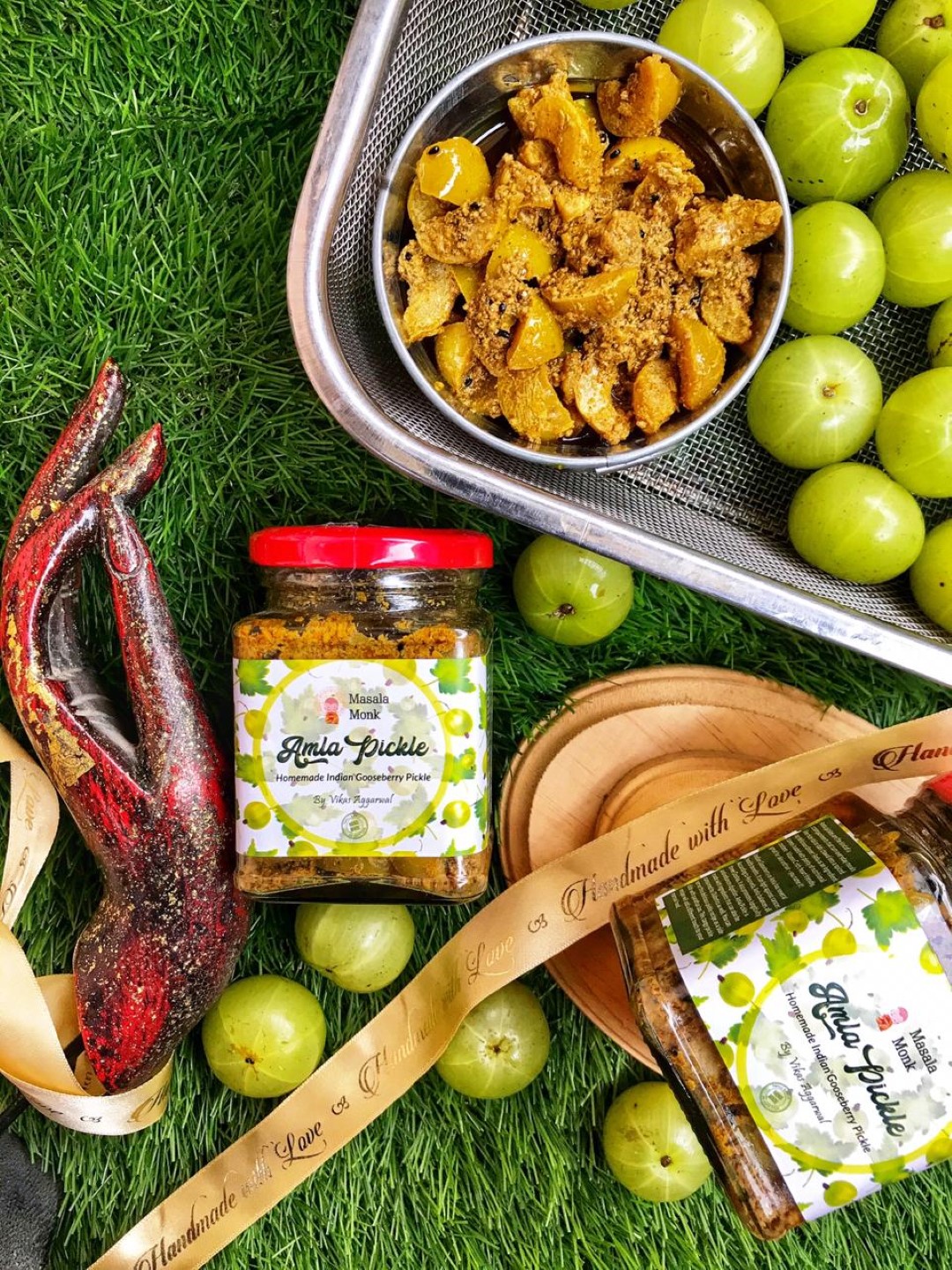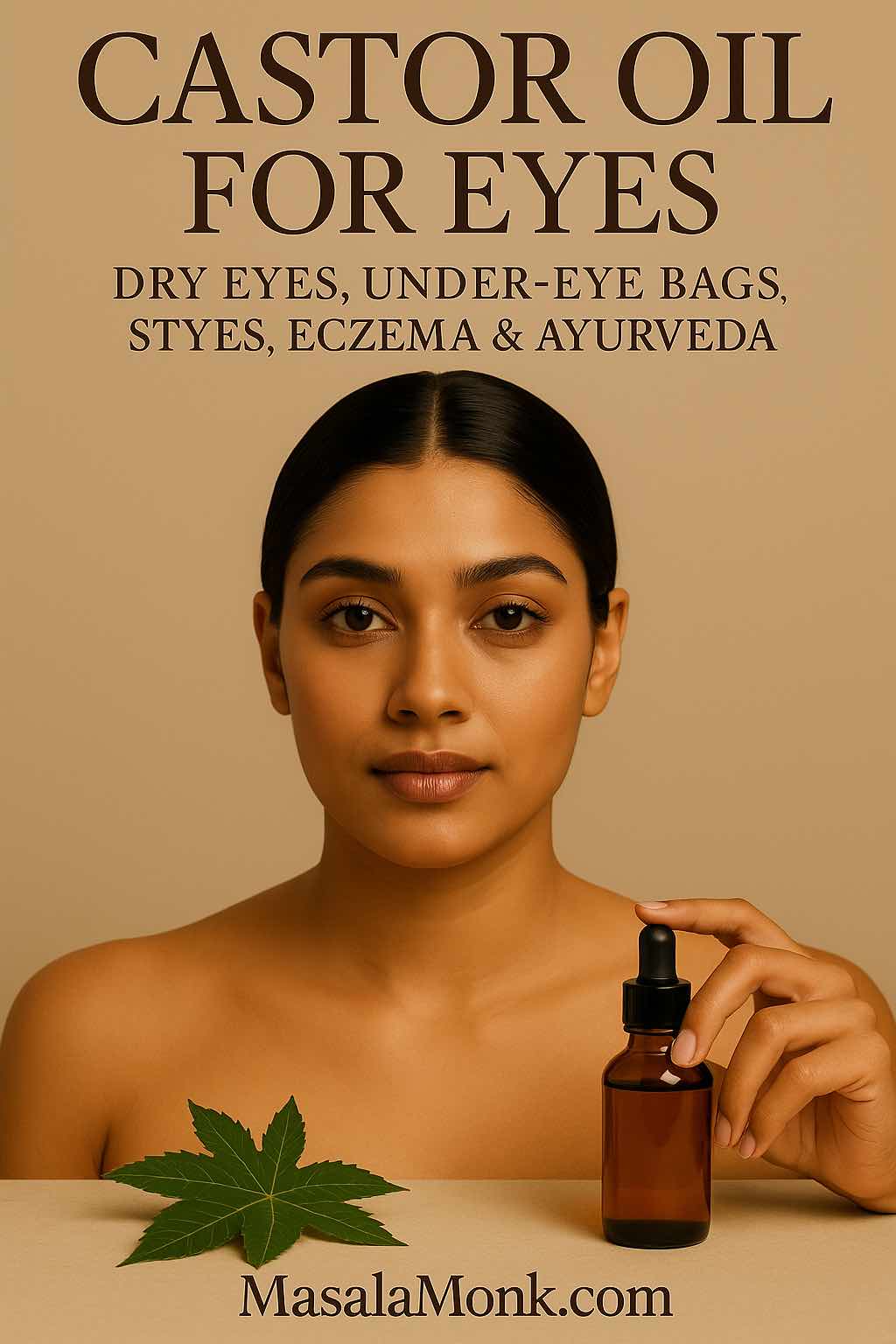
If you’ve heard that castor oil for eyes is a cure-all—good for dry eyes, eye bags, stye, chalazion, even eczema and “vision improvement”—you’re not alone. Social posts make it look simple: a few drops, a quick massage, and everything’s better. But eyes are delicate, and what you put on or near them matters. So let’s slow down, compare what’s actually known to what’s rumored, and map out a routine that’s gentle, safe, and realistic.
You’ll see where castor oil eye drops might fit (and where they absolutely don’t), how castor oil under eyes can soften the look of puffiness, what to do for stye and chalazion, how to handle eczema around eyes, and how to approach Ayurveda without crossing safety lines. We’ll keep transitions smooth, the tone warm, and the advice practical—because the goal is confidence, not confusion. If you’re exploring the topic more broadly, here are thoughtful uses for castor oil beyond eye care. Curious about traditional rituals? Learn how to try castor oil in the belly button safely and mindfully.
Medical information only: This article shares general information and skincare tips for the eye area. It is not a diagnosis or a treatment plan and does not replace a consultation with an ophthalmologist, optometrist, or dermatologist. Always follow your clinician’s advice for your eyes and skin.
⚠️ Heads up: This guide is for education. It isn’t medical advice or a diagnosis.
First Things First: Safety Before Shortcuts
Let’s set a clear guardrail at the very beginning: do not put non-sterile, kitchen castor oil directly into your eye. The ocular surface needs sterile, pH-balanced, purpose-built formulas. Non-sterile oils can irritate the cornea, destabilize your tear film, and raise infection risk. If you want a friendly, trustworthy starting point for what’s safe in eye care, bookmark the American Academy of Ophthalmology — Eye Health. For a bigger picture on dryness, causes, and treatments, the National Eye Institute’s dry eye overview is excellent.

Hold on to that rule as we go: kitchen oils are for skin care, not for the eyeball. When we talk about castor oil eye drops, we’re referring to sterile, commercially formulated emulsions designed for the eye—very different from a bottle of cosmetic oil. If your eyelids are irritated or reactive, start with these eyelid dermatitis strategies before adding anything new around the eyes.
Do not instill oils: Do not put non-sterile, kitchen castor oil or any cosmetic oil into your eyes. Only sterile, commercially formulated eye drops belong on the ocular surface.
Castor oil for dry eyes (and castor oil eye drops): what the science actually says
So, is castor oil for dry eyes actually helpful? The nuanced answer is sometimes, and only as part of sterile, clinically formulated eye-drop emulsions—most relevant for meibomian gland dysfunction (MGD), a common cause of evaporative dry eye.
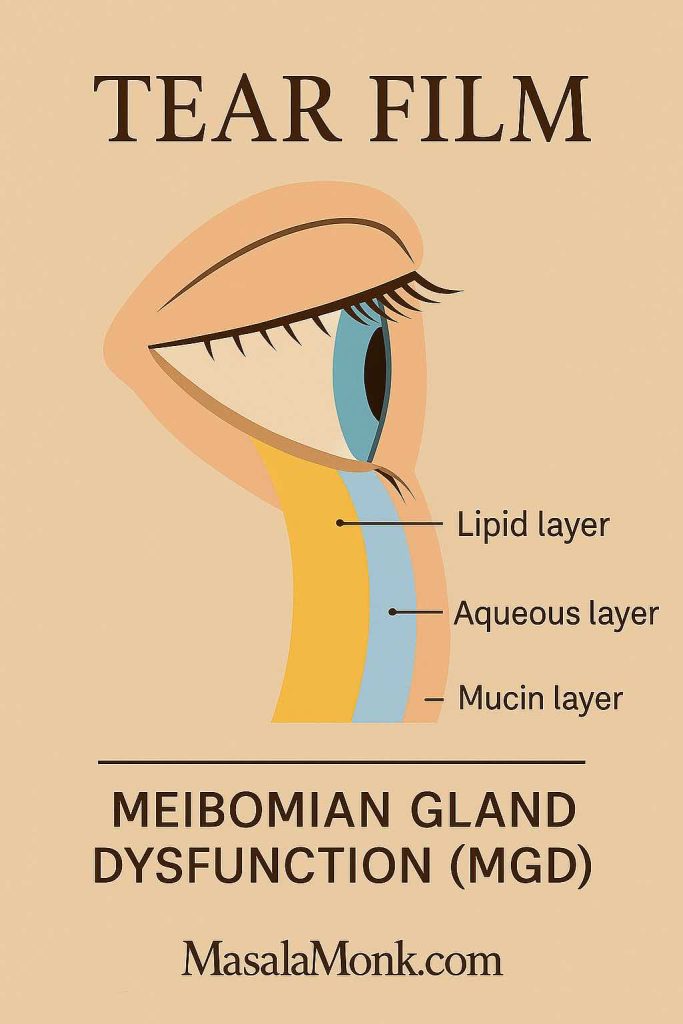
Where castor oil shows up in research
Some lipid-based artificial tears aim to stabilize the tear film’s oily layer, which slows evaporation. In this context, researchers have studied low-concentration, homogenized castor-oil emulsions (again, these are sterile eye-drop formulations) and found improvements in tear stability and symptoms for certain patients with MGD. If you like to read primary sources and reviews, a good jumping-off point is a curated PubMed search for this topic: PubMed — castor oil emulsion dry eye MGD. For patient-friendly context on dry eye types and treatment tiers, the NEI dry eye guide (National Eye Institute) is clear and current.
If you like evidence-first takes on oils, our guide to oil pulling for dental health separates benefits from hype.
Translating that into real-life choices
If your dryness is mainly evaporative—burning, fluctuating vision, relief right after you blink—your eye-care professional may recommend a sterile, lipid-containing tear. Some brands use castor-derived lipids; others rely on different lipids to accomplish the same tear-film support. The key is sterility and suitability, not the presence of “castor oil” on the label. If you want to understand why formulation matters so much, the American Academy of Ophthalmology explains ocular-safe product design in plain language.
Special groups: Contact-lens wearers, people who are pregnant/breastfeeding, and children should avoid experimenting around the eyes and seek personalised guidance from a qualified clinician.
For a castor-forward routine outside the eye, see how it performs on facial texture in castor oil for face wrinkles.
What this does not mean
Eye-drop studies do not validate dripping raw castor oil into the eye. Clinical emulsions are engineered to be sterile, isotonic, and friendly to the ocular surface. Kitchen oils are not. So while castor oil eye drops can have a role in a clinician-guided plan for MGD-related dry eye, DIY eye instillation is unsafe.
About “castor oil eye drops”: In research and clinical practice, “castor oil eye drops” refers to sterile, formulated emulsions made for eyes—not bottled cosmetic oil. If a product isn’t sterile and labelled for ocular use, don’t use it in your eyes.
A practical plan for dry eye
- Confirm the cause. Dry eye isn’t one thing. Your clinician can check for MGD (evaporative) versus aqueous-deficient dry eye or a combination.
- Start with the basics. For MGD, warm compresses (5–10 minutes) melt the thick meibum; gentle lid hygiene keeps gland openings clear. These two steps alone often help more than expected.
- Add a sterile lubricant if advised. Ask about lipid-based tears fitted to MGD. Whether those lipids are castor-derived or not, the key is that the drops are sterile and designed for eyes.
- Keep cosmetic castor oil on skin only. If you like the feel of castor oil, use it around the eyes, not in them—details just ahead.
For more on dry eye types and treatment ladders (including when to escalate care), skim the National Eye Institute – NEI dry eye page after this article.

Castor oil under eyes for eye bags, puffy eyes & dark circles: what it can (and can’t) do
Now, let’s change gears to eye bags, puffy eyes, and dark circles. Here, castor oil under eyes behaves like other occlusive moisturizers. It seals in water, making thin under-eye skin look smoother and feel cushioned. That can soften fine lines and make mild puffiness look a bit less obvious—especially when used at night on slightly damp skin.
The genuine upside
- Immediate comfort and softness. As an occlusive, castor oil reduces transepidermal water loss (TEWL) and keeps hydration where you want it.
- Smoother texture. Hydrated skin reflects light more evenly, so lines and crepiness look less pronounced.
- Pairs well with de-puffers. A tiny amount at night works nicely with a caffeine gel in the morning and a cool compress when you need quick de-puffing.
If you want a dermatology-oriented refresher on moisturizers and barrier support (not specific to castor oil but totally relevant to the under-eye), the American Academy of Dermatology’s moisturizer guide is a good primer.
Not sure if castor’s texture is your match? This post on natural oils for skin compares lighter options you can use under the eyes.
Hard limits (and why they matter)
Castor oil won’t dissolve fat pads, correct fluid retention from salt or allergies, change bone structure, or erase vascular/pigment dark circles. It’s a cosmetic helper, not a surgical alternative. Setting expectations clearly makes results feel better.
A simple, skin-only routine
- Night (texture & comfort): cleanse → optional hydrating serum → while skin is slightly damp, tap a rice-grain amount of castor oil under each eye. Stay below the lash line; avoid the waterline. If you’re milia-prone, use even less or skip entirely.
- Morning (de-puff & protect): cool rinse → caffeine gel or a light eye cream → sunscreen. A cold compress for 3–5 minutes helps on puffy mornings. Prefer a softer morning step? Try rose water on the face overnight to wake up calmer skin.
- Lifestyle nudges: steadier sleep, gentler evening salt, and allergy control will do more for puffy eyes than any topical.
Patch-test first: The eyelid/under-eye area is thin and reactive. Apply a speck to a small patch of intact skin for 48 hours before regular use. Skin-only application—keep oils away from the waterline and ocular surface. Stop immediately if you notice stinging, redness, or swelling.
⚠️ Gentle reminder: Everything here is for learning. For your eyes and skin, follow the plan you make with a qualified clinician.

Castor oil and stye or chalazion: where it fits (and where it doesn’t)
If you’ve got a stye (hordeolum) or a chalazion, you’ll hear the same advice from every clinician: warm compresses and gentle lid hygiene are first-line. Most cases settle with patient, consistent care. If you prefer quick, credible summaries (including red flags), see Mayo Clinic: Stye or the shorter NHS: Stye.
If lid skin is inflamed or itchy, these eyelid dermatitis strategies can make warm-compress care more comfortable.
Where does castor oil belong here? At most, on the skin as part of a soothing routine—not inside the eye. There’s no robust evidence that castor oil on its own treats a chalazion or stye. If swelling worsens, pain escalates, or vision changes, it’s time to be seen promptly.

Castor oil for eczema around eyes (eyelid/periocular eczema): a gentle, safe approach
Eczema around eyes is common, and the skin here is thin and reactive. Some people find that a pin-dot of castor oil on intact, non-weeping skin feels soothing because it seals in moisture. Others flare with oils and need something blander.
Can castor oil calm eyelid eczema symptoms?
Sometimes, a pin-dot of castor oil on intact, non-weeping skin can feel soothing because it’s an occlusive that helps seal in moisture. However, eyelid skin is thin and reactive, and eyelid eczema often has triggers: fragrance, preservatives, certain cosmetics, even nail polish or hair products that transfer to the lids. That’s why the first meaningful wins come from simplifying products and using bland emollients. A practical, patient-friendly overview lives here: National Eczema Society — Eczema around the eyes. Another useful Q&A on what typically helps and what to avoid is the National Eczema Association’s eyelid eczema advice.
Eyelid eczema: During flares, prioritise fragrance-free routines and bland emollients as advised by your clinician. Oils (including castor oil) may irritate active eczema; consider them only on calm, intact skin after a patch test.
Better first-line options for eyelid dermatitis
Dermatology and hospital guides typically suggest fragrance-free, dye-free routines and petrolatum-based ointments during flares, alongside trigger avoidance. When needed, clinicians may prescribe a short, cautious course of a mild topical steroid or a non-steroidal anti-inflammatory tailored for eyelids. For a mainstream baseline, see NHS: Atopic eczema. If you want a hospital leaflet focused on the eye area, this PDF is practical and plain-spoken: Leicester Hospitals — Treating eczema around your eyes (periocular dermatitis). Adults with eczema should also watch for eye-related problems and get evaluated early; see American Academy of Dermatology — Adults with eczema: watch for eye problems.
For broader context on triggers and routines, explore our 8 types of eczema overview.
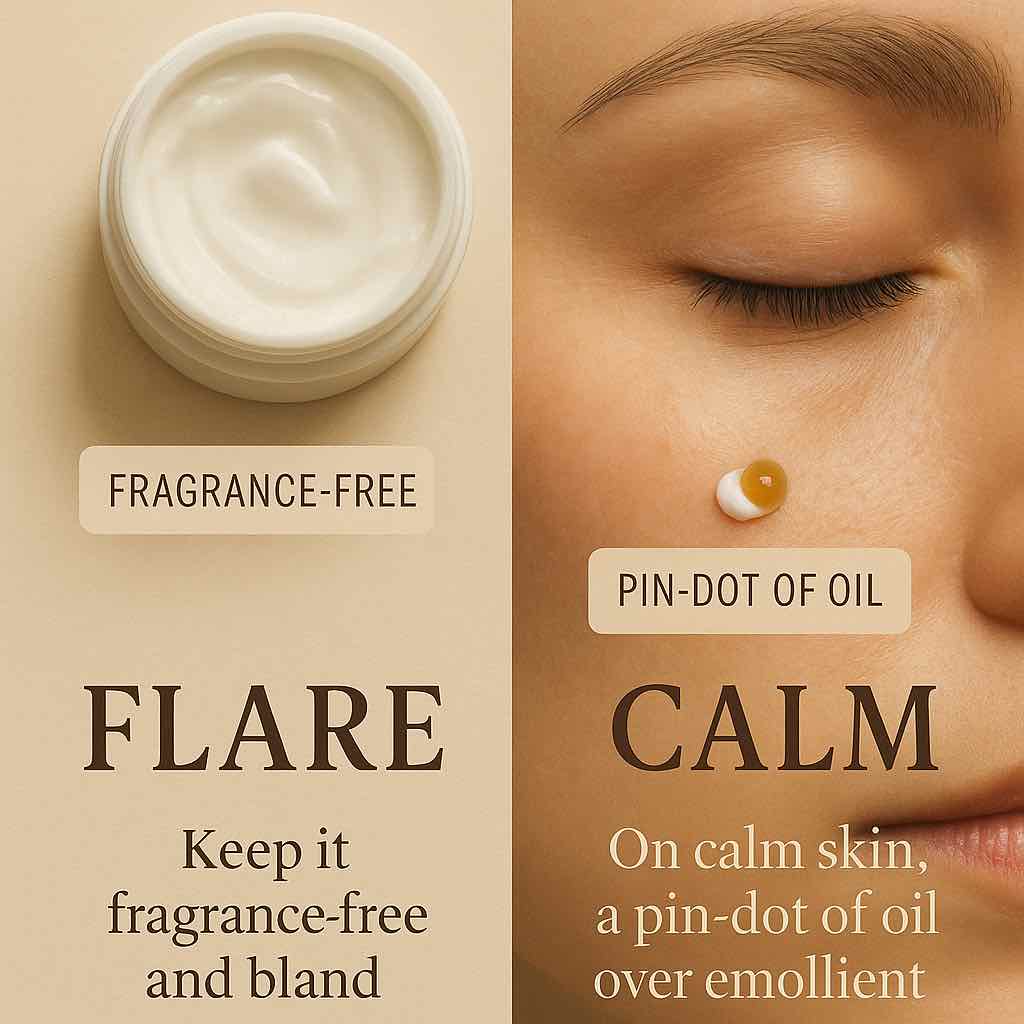
Where to place castor oil in an eczema-friendly routine
- Patch test first. Dab a speck along the outer orbital bone for two nights and wait. If there’s no redness or stinging, continue.
- Use it sparingly. Keep castor oil around eyes (skin only) as a comfort step on intact skin, preferably over a bland emollient layer.
- Back off during flares. Inflamed, weeping, or intensely itchy skin is more reactive—save the oil until things are calmer, and lean on your clinician’s treatment plan.
- Ask for help early. Adults with eczema should keep an eye on eye-related problems and get evaluated promptly; see the American Academy of Dermatology — Adults with eczema: watch for eye problems.
Managing systemic eczema too? See foods to avoid for eczema for diet patterns that may help.
If you’re curious about evidence specifically linking castor oil to eczema relief, it’s fair to say that research is limited and mixed; some people find it soothing, others find it irritating on active eczema. Two plain-English summaries make this clear: Medical News Today — Castor oil for eczema: research is limited and HealthCentral — Castor Oil for Eczema.
Ayurveda and castor oil for eyes: a balanced, modern take
Classical Ayurvedic practice describes Netra Tarpana and related netra therapies using medicated ghee or oils. In tradition, these are clinic procedures performed by trained practitioners with strict hygiene and individualized assessment. They are not home remedies. If an Ayurvedic flavor appeals to you, it’s possible to honor that lens and keep safety first:
- Keep at-home oils external: castor oil under eyes for skin comfort can be fine for some, but not instilled into the eye.
- Blend whole-person habits—regular sleep, gentle breath work, steady daily rhythm—with evidence-based dry-eye care.
- For supervised, traditional therapies, look to credible portals and practitioners rather than random blogs. Two orientation points: the Ministry of AYUSH (Govt. of India) and the AYUSH Research Portal.
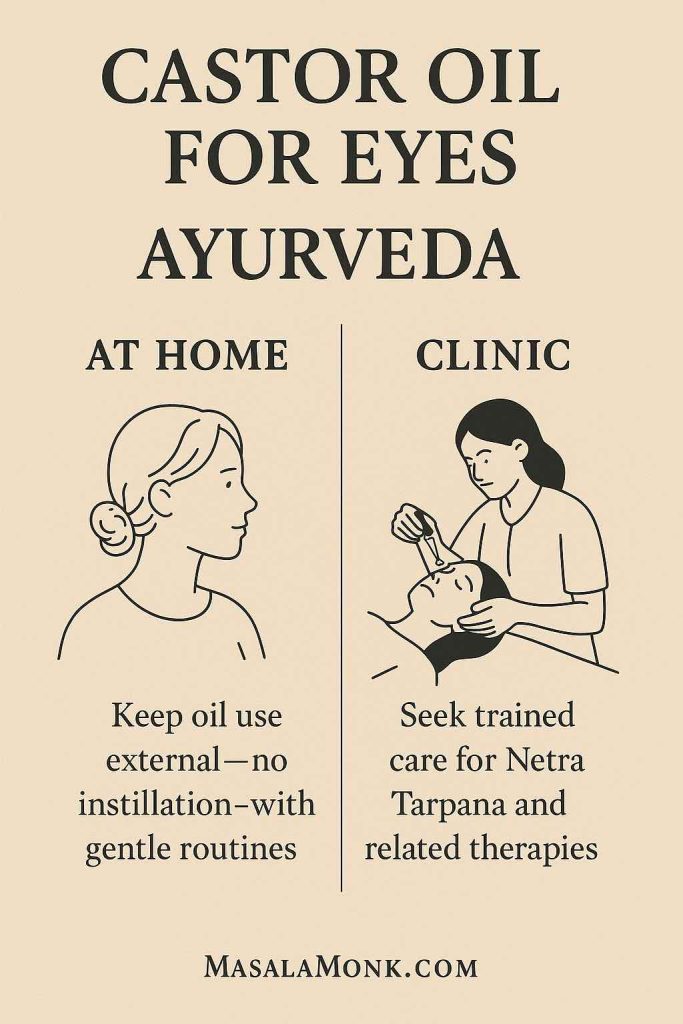
If you enjoy ritual practices, this guide to ginger oil and the belly button separates myths from mindful use.
Ayurvedic eye procedures: Therapies like Netra Tarpana are clinic procedures under trained practitioners. They are not DIY. At home, keep any oil use external and never instilled into the eye.
How to use castor oil around the eyes (skin-only), step by step
Because “how much?” and “how exactly?” matter just as much as what to buy, here’s a simple routine you can follow tonight.
Patch test (don’t skip)
Apply a speck along the outer orbital bone once nightly for two consecutive nights. If there’s no redness, itching, or burning by day three, proceed. If you react, stop.
Night routine (comfort and texture)
- Cleanse with something your skin already tolerates well.
- Apply a hydrating serum if you use one and give it a minute.
- Warm a pin-dot of castor oil between fingertips.
- Gently tap under the eye, keeping a finger’s width away from the lash line.
- If your skin is milia-prone or oily, use even less—or skip. Thicker isn’t better here.
Morning routine (de-puff & protect)
- Cool rinse to calm swelling.
- Caffeine gel or a light eye cream to nudge fluid along.
- Sunscreen every morning—end of story.
Product pointers
- Choose cold-pressed, hexane-free castor oil labeled for cosmetic use.
- Avoid fragrance near the eyes.
- Cap tightly and store at room temperature; replace if the oil smells “off.”
Prefer something silkier? See when avocado for skin makes sense around the eye (and when to avoid direct contact).
Remember, this is skin care, not treatment for medical eye disease. For stubborn dryness, a clinician-guided plan with lipid-based tears (when appropriate) will help more than any amount of DIY oil. For a clear overview, see the NEI dry eye page.
Myths to retire (so you don’t waste time or take risks)
Let’s be direct about a few common claims:
- “Castor oil cures cataracts/glaucoma/floaters.” There’s no high-quality clinical evidence for these promises. Be skeptical of viral “hacks.” When in doubt, check the American Academy of Ophthalmology — Eye Health and talk to your ophthalmologist.
- “If it’s natural, it’s safe to put in your eyes.” Sterility, pH, and formulation matter more than buzzwords. The ocular surface is not the place for kitchen experiments.
- “More is better.” With castor oil under eyes, more is usually just… greasier. Use a rice-grain amount at most.
For a simple, non-miracle refresh, try rose water for skin care as a quick under-eye pick-me-up.
If something seems magical, press pause. Your vision is too important to gamble on trends.
When to see a professional—today, not “someday”
Seek urgent care if you develop severe pain, light sensitivity, vision changes, pus/discharge, trauma, or chemical exposure, or if swelling does not improve after 48–72 hours of warm compresses.
Please book an exam if you notice sharp pain, light sensitivity, blurred or fluctuating vision, pus, trauma, chemical exposure, or swelling that isn’t easing after a few days of warm compresses. If you’re considering castor oil eye drops, treat them like any other eye medicine: choose only sterile, commercially formulated products on your clinician’s advice. For a sensible, patient-friendly foundation, revisit the NEI dry eye guide and the AAO Eye Health hub.
Putting it all together (and why this plan works)
By now, the pattern is clear:
- For dry eye: basics first (warm compresses, lid hygiene), then sterile, lipid-based tears if appropriate. Castor oil eye drops can fit here only when they are formulated for eyes.
- For under-eye bags and puffiness: castor oil under eyes can help the skin look smoother and feel cushioned, but it won’t change anatomy. Pair it with morning caffeine gel, a cold compress, and steady sleep.
- For stye and chalazion: warm compresses and time do the heavy lifting; see a clinician if it worsens or lingers.
- For eczema around eyes: keep routines fragrance-free, use bland emollients during flares, and treat castor oil as a cautious, skin-only comfort step on calm skin.
- For Ayurveda lovers: keep at-home oils external; seek qualified care for any procedure-style therapy.
This slower, steadier plan tends to perform better for readers because it meets each search intent in plain language, shows real empathy, and draws a bright, safe line between skin care and ocular medicine.
⚠️ Educational use only: This article shares general information to help you understand options and risks. It does not replace care from an ophthalmologist, optometrist, or dermatologist.
Sources & further reading
- American Academy of Ophthalmology — Eye Health: safe eye-care basics and warnings about DIY instillation.
https://www.aao.org/eye-health - National Eye Institute — Dry Eye: types, treatments, and when to escalate.
https://www.nei.nih.gov/learn-about-eye-health/eye-conditions-and-diseases/dry-eye - PubMed (curated search): castor-oil/lipid emulsions and MGD/dry-eye research.
https://pubmed.ncbi.nlm.nih.gov/?term=castor+oil+emulsion+dry+eye+meibomian+gland+dysfunction - Mayo Clinic — Stye: symptoms, self-care, and red flags.
https://www.mayoclinic.org/diseases-conditions/stye/symptoms-causes/syc-20378017 - NHS — Stye: short UK-style guidance (alternative to Mayo).
https://www.nhs.uk/conditions/stye/ - National Eczema Society — Eczema around the eyes: triggers, emollients, and practical steps.
https://eczema.org/information-and-advice/types-of-eczema/eczema-around-the-eyes/ - American Academy of Dermatology — Adults with eczema: watch for eye problems: when to seek care.
https://www.aad.org/public/diseases/eczema/adult/eye-problems - NHS — Atopic eczema: plain-language overview for eczema care.
https://www.nhs.uk/conditions/atopic-eczema/ - Leicester Hospitals — Treating eczema around your eyes (periocular dermatitis) [PDF]: hospital leaflet with practical tips.
https://yourhealth.leicestershospitals.nhs.uk/library/musculoskeletal-specialist-surgery-mss/ophthalmology/2360-treating-eczema-around-your-eyes-periocular-dermatitis/file - Ministry of AYUSH (Govt. of India): orientation for supervised traditional therapies.
https://www.ayush.gov.in/
FAQs
1) Does castor oil for eyes actually work for dry eyes?
Yes—and no. Castor oil eye drops can help evaporative dry eye when they’re sterile, professionally formulated emulsions designed for the ocular surface. However, kitchen castor oil should not go into your eye. Instead, talk to your clinician about lipid-based artificial tears while you continue warm compresses and lid hygiene.
2) Can I use castor oil under eyes for eye bags and puffy eyes?
Generally, yes—on skin only. Because castor oil is an occlusive, it can soften the look of the under-eye by sealing in moisture. Yet, it won’t remove fat pads or fix fluid retention. For quicker de-puffing, pair a tiny nighttime application with morning caffeine gel and a cool compress.
3) How do I apply castor oil around the eyes safely?
First, patch-test on intact skin for 48 hours. Then, at night, cleanse, optionally use a hydrating serum, and tap a rice-grain amount of oil below the lash line—never on the waterline. Finally, stop if you notice stinging, redness, or swelling.
4) Is castor oil good for stye or chalazion?
It can feel soothing on the eyelid skin, but the first-line treatment is still warm compresses and gentle lid hygiene. Because evidence for castor oil as a cure is limited, avoid getting oil in the eye. If the lump worsens or vision changes, see a clinician.
5) What about castor oil for eczema around eyes (eyelid/periocular eczema)?
Sometimes, a pin-dot on calm, non-weeping skin can feel comforting. However, during flares, eyelids are reactive, so stick to fragrance-free basics and bland emollients as advised by your dermatologist. Oils, including castor, can irritate active eczema—so go slow and patch-test.
6) Are “castor oil eye drops” the same as bottled cosmetic castor oil?
No. Castor oil eye drops in studies are sterile, isotonic emulsions formulated for eyes. By contrast, bottled cosmetic oils are not sterile and shouldn’t be instilled. Therefore, if a product isn’t clearly labelled and approved for ocular use, keep it off the eyeball.
7) How long until I see results under the eyes?
It depends. With castor oil under eyes, some people notice softer texture within days because hydration improves light reflection. But for puffiness from sleep, salt, or allergies, improvements hinge more on habits (sleep, sodium, antihistamines if appropriate) than on any topical.
8) Can I use castor oil for eyes if I wear contact lenses?
Preferably, remove lenses before any eye-area routine. Although you’re not putting oil in your eye, residue can migrate. If you use sterile lipid-based artificial tears, follow lens-safe directions from your eye-care professional.
9) Is castor oil safe during pregnancy or while breastfeeding?
Because the eyelid area is sensitive and circumstances vary, it’s best to ask your clinician first. If approved, keep application external, minimal, and on intact skin only—and avoid any non-sterile instillation into the eye.
10) How much castor oil should I use under eyes?
Less is more. Warm a pin-dot between clean fingertips and tap it in; a heavy layer is unnecessary and may lead to milia or clogged pores. Moreover, using it every other night often works as well as nightly for many skin types.
11) Which is better for dry eyes—castor oil eye drops or plain artificial tears?
It depends on the type of dry eye. For evaporative dry eye/MGD, lipid-based sterile tears (some include castor-derived lipids) can be beneficial. For aqueous-deficient dry eye, other tear types or prescriptions may be preferred. So, start with a proper diagnosis, then choose accordingly.
12) Are there side effects from castor oil around the eyes?
Occasionally, yes. Some people experience stinging, redness, milia, or itch—especially on sensitive or eczematous skin. Hence, always patch-test, keep to skin-only use, and discontinue if irritation appears.
13) What are good alternatives if castor oil under eyes doesn’t suit me?
You have options. For hydration, try hyaluronic-acid serums or petrolatum. For puffiness, use caffeine gel and cool compresses. And for texture over time, a gentle peptide or ceramide product may help, provided it’s fragrance-free and eye-area appropriate.
14) Where does Ayurveda fit with castor oil for eyes?
At home, keep any oils external and focus on rhythm—rest, breath, gentle routines. Meanwhile, clinic-based therapies (like Netra Tarpana) belong with trained practitioners using medical-grade materials. Safety first; tradition and modern care can complement each other.
15) When should I stop home care and see a professional?
Right away if you develop severe pain, light sensitivity, vision changes, pus/discharge, trauma, or chemical exposure. Likewise, if a stye/chalazion doesn’t improve after several days of warm compresses—or if dry-eye symptoms persist despite basics—book an appointment.
Related Reading
Before you move on, these gentle, eye-area-friendly reads can help you fine-tune your routine:
- Next, explore broader ways to use castor oil:
Discover practical tips (and myths to ignore) in uses for castor oil—a helpful overview if you’re curious beyond eye care. - Also, calm fussy eyelids the smart way:
If your lids feel irritated or reactive, start with eyelid dermatitis strategies—simple, fragrance-free steps that play nicely with sensitive skin. - If you prefer a castor-forward face routine:
See texture tips, layering ideas, and “how much is enough” in castor oil for face wrinkles—useful even if you only apply near (not on) the eye area. - Meanwhile, try a lighter refresh for mornings:
A quick, soothing spritz can perk up tired skin; here’s how to use rose water for skin care without overdoing it. - If under-eye oils feel too heavy:
Compare textures and find gentler options in this primer on natural oils for skin—handy when you want slip without greasiness. - And if eczema is part of the picture:
Small diet shifts can support calmer skin—start with foods to avoid for eczema and note what changes actually help you.


